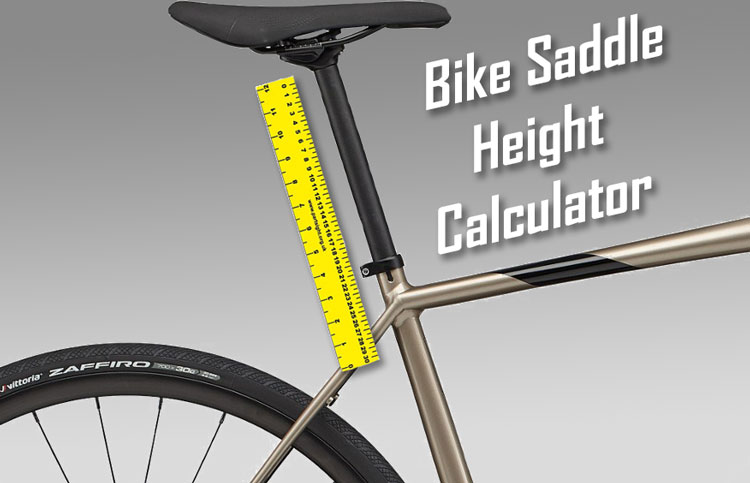Why Saddle Height Matters for Comfort and Performance
When it comes to cycling, the height of the bike seat plays a critical role in determining the comfort and efficiency of the ride. A saddle that is correctly adjusted can make all the difference in preventing injuries, improving performance, and enhancing overall riding experience. On the other hand, an incorrectly adjusted saddle can lead to a range of issues, including discomfort, pain, and decreased performance. For instance, a saddle that is too high can cause riders to overstretch, leading to discomfort in the groin and knee areas. Conversely, a saddle that is too low can result in knee strain and inefficient pedaling. Moreover, a poorly adjusted saddle can also affect the rider’s posture, leading to back and neck pain. By optimizing the height of the bike seat, riders can enjoy a more comfortable and efficient ride, while also reducing the risk of injuries and improving overall performance.
Measuring Your Ideal Saddle Height: A Step-by-Step Guide
To ensure a comfortable and efficient ride, it’s essential to measure the ideal height of the bike seat. This can be achieved by following a few simple steps. First, use a bike fit calculator to determine the recommended saddle height based on your inseam and riding style. Next, measure your inseam by standing against a wall with your feet shoulder-width apart and a book or ruler between your legs. Record the distance from the floor to the top of the book or ruler. Then, consider your riding style, as this can affect the ideal saddle height. For example, road bikers typically prefer a lower saddle height than mountain bikers. Finally, use a tape measure or ruler to measure the distance from the center of the bottom bracket to the top of the saddle. By following these steps, you can determine the ideal height of the bike seat and make adjustments accordingly.
How to Adjust Your Bike Seat for Maximum Comfort
Once you’ve determined the ideal height of the bike seat, it’s time to make the necessary adjustments. To do this, you’ll need a few basic tools, including quick-release levers, Allen wrenches, and a torque wrench. Start by loosening the quick-release lever or bolt that holds the saddle in place. Then, use the Allen wrench to adjust the saddle height. Make small adjustments, as even a slight change can make a big difference in comfort and performance. It’s essential to test the saddle height after each adjustment, as this will help you find the perfect fit. When testing, pay attention to your body position, pedaling efficiency, and overall comfort. If you’re still unsure, consider consulting with a professional bike fitter or taking your bike to a local bike shop for assistance. Remember, the key to finding the perfect fit is to make small adjustments and test the height of the bike seat regularly.
Common Mistakes to Avoid When Adjusting Your Bike Seat
When adjusting the height of the bike seat, it’s essential to avoid common mistakes that can lead to discomfort, pain, and decreased performance. One of the most common mistakes is over-adjusting the saddle height. This can cause the rider to feel stretched out or uncomfortable, leading to poor pedaling efficiency and increased fatigue. On the other hand, under-adjusting the saddle height can cause the rider to feel cramped or bunched up, leading to discomfort and pain in the knees, hips, and lower back. Another mistake is failing to consider the rider’s individual needs and preferences. For example, riders with shorter legs may require a lower saddle height, while riders with longer legs may require a higher saddle height. To avoid these mistakes, it’s crucial to make small adjustments and test the saddle height regularly. Additionally, riders should consider consulting with a professional bike fitter or taking their bike to a local bike shop for assistance. By avoiding these common mistakes, riders can ensure a comfortable, efficient, and enjoyable ride.
The Impact of Saddle Height on Different Types of Riding
The height of the bike seat has a significant impact on different types of riding, including road biking, mountain biking, and commuting. For road bikers, a lower saddle height can provide a more aerodynamic position, allowing for faster speeds and improved efficiency. However, a saddle height that is too low can lead to discomfort and pain in the knees and hips. Mountain bikers, on the other hand, often require a higher saddle height to provide more clearance over obstacles and to allow for more aggressive riding styles. Commuters, who often ride in heavy traffic, may prefer a slightly higher saddle height to provide better visibility and control. In all cases, the ideal saddle height will depend on the individual rider’s needs and preferences. By considering the type of riding and the rider’s individual needs, cyclists can optimize the height of the bike seat for maximum comfort, control, and performance.
Product Review: Top Bike Seats for Comfort and Performance
When it comes to finding the perfect bike seat, comfort and performance are key. A well-designed bike seat can make all the difference in a rider’s comfort and efficiency. In this review, we’ll take a look at some of the top bike seats on the market that prioritize comfort and performance. Brooks, a legendary brand in the cycling industry, offers a range of saddles with ergonomic design and cutouts to reduce pressure and discomfort. The Brooks Cambium C17, for example, features a durable and waterproof design with a comfortable, cushioned ride. Selle Italia, another well-known brand, offers a range of saddles with advanced technology and innovative materials. The Selle Italia SLR Flow, for instance, features a sleek, aerodynamic design with a comfortable, ergonomic shape. Specialized, a brand known for its high-performance products, offers a range of saddles with advanced technology and innovative features. The Specialized Power Expert, for example, features a stiff, lightweight design with a comfortable, ergonomic shape. When choosing a bike seat, it’s essential to consider factors such as riding style, saddle height, and personal comfort preferences. By selecting a bike seat that meets these needs, riders can optimize their comfort and performance on the bike. The height of the bike seat, in particular, plays a crucial role in determining comfort and performance. A saddle height that is too low or too high can lead to discomfort, pain, and decreased performance. By choosing a bike seat that allows for optimal saddle height, riders can ensure a comfortable, efficient, and enjoyable ride.
Tips for Maintaining Your Bike’s Saddle Height Over Time
Maintaining the ideal height of bike seat is crucial to ensure a comfortable, efficient, and enjoyable ride. Over time, the saddle height can shift due to wear and tear, causing discomfort and decreased performance. To prevent this, it’s essential to regularly check and adjust the saddle height. Here are some tips to help you maintain the ideal saddle height: First, schedule regular bike maintenance sessions to check the saddle height and make any necessary adjustments. Use a bike fit calculator or measure your inseam to ensure the saddle height is still optimal. Additionally, consider storing your bike in a dry, cool place to prevent damage to the saddle and seatpost. When storing your bike, make sure the saddle is in a neutral position to prevent it from becoming misaligned. Finally, consider keeping a bike maintenance log to track any adjustments made to the saddle height and other components. By following these tips, you can ensure the height of bike seat remains optimal, providing a comfortable, efficient, and enjoyable ride. Remember, small adjustments can make a big difference in comfort and performance, so don’t be afraid to experiment and find the perfect fit for your bike.
Conclusion: Finding the Perfect Fit for a Comfortable and Efficient Ride
In conclusion, the height of bike seat plays a crucial role in determining the comfort, efficiency, and overall enjoyment of a ride. By following the tips and guidelines outlined in this article, riders can optimize their saddle height to achieve a more comfortable, efficient, and enjoyable ride. Remember, proper saddle height is essential for comfortable riding, efficient pedaling, and preventing injuries. By measuring the ideal saddle height, adjusting the bike seat for maximum comfort, and avoiding common mistakes, riders can ensure a comfortable and efficient ride. Additionally, maintaining the ideal saddle height over time is crucial to prevent discomfort, pain, and decreased performance. By incorporating the tips and guidelines outlined in this article, riders can find the perfect fit for their bike and enjoy a more comfortable, efficient, and enjoyable ride. Whether you’re a seasoned cyclist or just starting out, optimizing the height of bike seat is a crucial step in achieving a comfortable and efficient ride.








